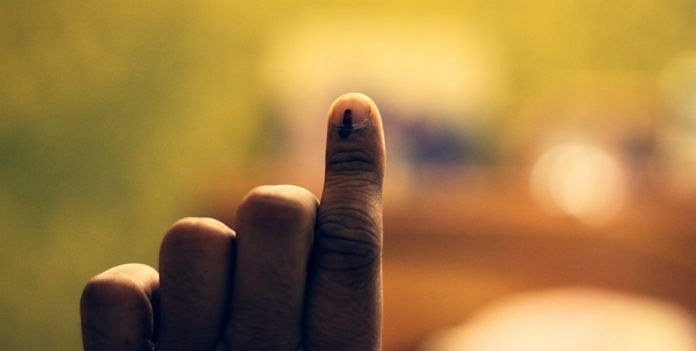New Delhi: The 2019 Parliamentary elections have been held for the 17th Lok Sabha. A total of 543 MPs will be voted in from single-member constituencies across the 29 states and seven union territories of the country.
To form a government at the centre, a party or an alliance requires 272 seats, the halfway mark.
In the 2014 Lok Sabha elections, BJP alone won 282 seats while the NDA won 336 seats.
The current Lok Sabha has 522 members following resignations and the deaths of some MPs. Around 268 of them represent the ruling BJP.
The electorate
Close to 90 crore people were eligible to vote this time, with new voters numbering 8.43 crore, of whom 1.5 crore are in the 18-19 year age bracket.
The aspirants
There are currently 2,293 parties registered with the Election Commission. The registered parties, unlike the recognised ones such as the BJP and the Congress, cannot contest elections on a fixed symbol of their own — they must choose from a list of ”free symbols” issued by EC.
To be recognised as a political party at the national or state level, a party needs to poll a minimum percentage of votes in the elections to either the assembly or the Lok Sabha.
For national status, a party has to win two per cent of seats in the Lok Sabha (11 seats) elections from at least three different States. Or the party should poll six per cent of the votes in a general or assembly election in four states, in addition to winning 4 Lok Sabha seats.
State-wise allocation of seats
The number of seats allocated to each state depends on its population.
The states with the largest number of seats are Uttar Pradesh (80 seats), Maharashtra (48 seats), West Bengal (42 seats), Bihar (40 seats), Tamil Nadu (39 seats), Madhya Pradesh (29 seats), Karnataka (28 seats) and Andhra Pradesh (25 seats).
The states with the lowest seat shares are Jammu and Kashmir (4), Manipur (2) and Mizoram, Meghalaya, Nagaland, Sikkim and Tripura with one apiece.
Election schedule
The 2019 election was spread across a month and in seven phases, between 11 April and 19 May. West Bengal, Uttar Pradesh and Bihar saw voting in all seven phases.
First past the post and vote shares
India follows a first-past-the-post system where the candidate with the highest number of votes wins. The FPTP system, however, does not always reflect a truly representative mandate. For example, in 2014, the NDA won 336 seats with just 38.5 per cent of the popular vote.
In the Madhya Pradesh assembly elections last December, the difference in vote share between the Congress and BJP was minimal, with the Congress winning 41.4 per cent of the votes and the BJP 41.3 per cent of the votes. In terms of seats, however, Congress won 114 seats and the BJP 109.
Counting Day
23 May is counting day when the results will be declared.
There is a possibility, however, that results could be delayed by a few hours or even declared the next day because the Supreme Court has increased the voter-verified paper audit trail (VVPAT) count to five instead of one EVM in every assembly segment.
The VVPAT system enables EVMs to record each vote by generating a slip. The Deputy Election Commissioner, Sudeep Jain has said that counting votes using one VVPAT takes an hour and so additional four VVPATs could take four hours.
Also read: 2019 is EC’s Year of Accessible Elections but what we want is a disabled MP in Parliament







The Parliament of India comprises of Rajya Sabha , Lok Sabha and President. There can be maximum 552 members (530 states 20 Union Territories 2 Anglo Indians) in the Indian Lok Sabha .
Given the dreadful state of the economy, all one wishes to know is : Kaun banega Vitt Mantr ?
… Mantri